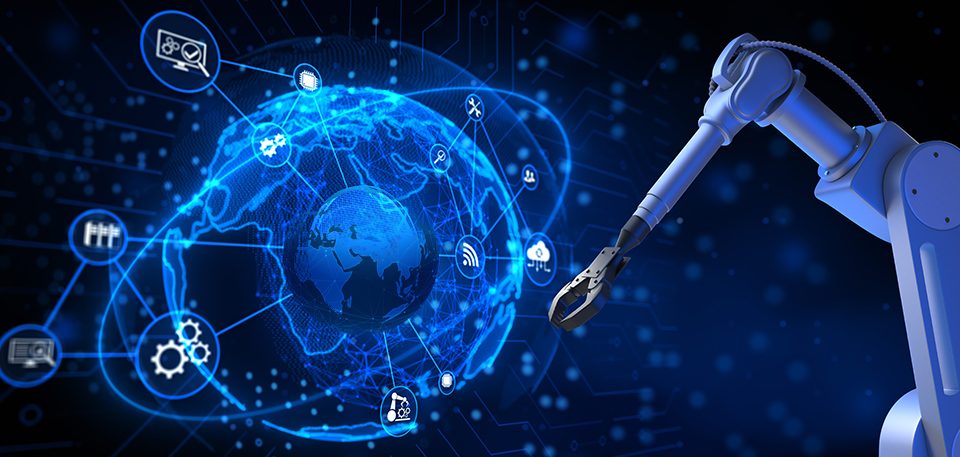Kubernetes for AI, How Kubernetes is becoming a platform for AI
AI and Kubernetes represent merging trends. Most companies are operating or planning to run the Kubernetes AI platform for reducing their workloads and managing work effectively. Kubernetes is optimal for the business because it balances the AI algorithms to make them ideally effective. Data sets and deep learning algorithms need a massive amount of computing. Kubernetes assists in reducing the burden of computing by effectively scaling the data sets and algorithms.
After the models are trained, they serve in multiple deployment scenarios, from poses challenges to non containerized edge computation to central data centres forms of applications. Kubernetes can offer the essential versatility for a disrupted rollout of interference agents on various substrates. It also provides a way to place artificial intelligence workloads over several commodity servers across the software pipeline while extracting the management overhead.
Introduction about AI/Machine learning & Kubernetes:
Many businesses market their services or systems as ‘powered by ai technology‘ when it is not often the case. However, we can find these examples in dodging marketing. So initially, it’s essential to understand ML and AI, as there are multiple related use cases of ML and AI in our world today.
Artificial Intelligence is a methodology to construct a system that mimics decision-making or human behaviour. At the same time, Machine Learning (ML) is a segment of AI that utilizes data to resolve tasks. These solvers are trained data models that learn depending on the information provided to them. This given information is acquired from linear algebra and probability theory. ML algorithms utilize our data to understand and automatically resolve predictive tasks.
Things to know about using Kubernetes for AI:
Here are the four things to learn about using Kubernetes for AI
- What does it mean by containers, and where does Kubernetes ideally fits in?
Deploying, developing, and maintaining AI applications needs a lot of ongoing work. Compared to virtualization and virtual machines that help simplify the compute and management workloads, containers assist businesses more easily to deploy, create, and scale cloud-native AI applications. Therefore containers offer a way for applications and companies to be bundled and run. They are easy to scale and portable. They can be utilized throughout the application’s lifetime, from development to test to production. Containers make use of Kubernetes, just the same as virtual machines used as the hypervisor. It is an open-source platform to automate the classification and management of containerized applications.
How are containers and Kubernetes used for AI?
Many companies are proceeding to container-based microservices structures to build modern applications, including AI. The result is an eruption in the count of containers to maintain and manage. It is common to find conditions where numerous container instances are deployed regularly. Those containers must be scaled and managed over time. Thus the requirement for Kubernetes. The businesses have embraced it as the controlling solution for Kubernetes container orchestration.
You might wonder that what Kubernetes do precisely. It makes it convenient to manage and deploy microservices architecture applications. In particular, it assists companies in managing aspects of the operations of applications. For example, Kubernetes can be utilized to equipoise and applications load across a monitor, infrastructure, control, and automatically restrict resource consumption, carry application instances from one host to other and many more
-
How is the use of Kubernetes and containers distinct from other deployment methods?
Kubernetes and Containers are the next steps in the application deployment evolution. Same as companies progressed from deployments on physical servers to hypervisors and virtualization. Kubernetes and containers provide an optimal deployment technique to the requirements of today’s cloud-native microservices Kubernetes architecture.
Every virtual machine manages all the components of an application that includes its operating system; on virtualized hardware, a container allocates the OS with distinct instances. Still, it has its CPU memory, filesystem, and process space. It allows them to be portable across OS and cloud distributions
-
How do instances operate altogether?
A microservices architecture needs a service network for distinct microservice instances to communicate and operate altogether. This service network is crucially an infrastructure layer that lets businesses connect, control, secure, and observe their microservices. At a high level, a service network helps to minimize the complication of deployments and developments. Therefore, the service network also lets businesses shape how service instances perform necessary actions such as load balancing, service discovery, data encryption, authorization, and authentication. Of course, Kubernetes is not the only technique to deploy microservices, and Istio is not the only service network. Still, multiple leading firms like IBM and Kubernetes Google feel the two increasingly become inseparable.
How can Kubernetes help Kubernetes based AI/ML workflow:
Kubernetes can assist in several ways in Kubernetes-based AI/ML workflow. The procedure includes:
-
Codifying problems and metrics:
Initially, business leadership recognizes and determines business metrics and objectives to assess the success of the machine learning and artificial intelligence project.
-
Data gathering and cleaning:
Further data engineers gather relevant and available data, process and clarify what is usable by the data scientists who train the model. Finally, the data needs to be labelled and correctly formatted so it is consumable by the data scientist. It is a vital stage whose concern is often overlooked. And you cannot generate a high-quality model without high-quality data.
-
Model tuning and training:
The following step is the training of the model. The target here is to produce helpful and predictable responses to incoming new data.
-
Model validation:
After the training stage, the data scientists are required to check their model and their hypothesis utilizing a distinct data set that was used to train the model
-
Model Deployment:
In the next stage, the model is deployed into an actual production world scenario, likely combining with smart applications that make calls to the model for predicting in real-time
-
Monitoring Validation:
And lastly, we require validation and monitoring of models post-deployment. One of the significant challenges of AI/ML models is concept drift.
A Proven Approach:
-
Data:
Here is outlined the importance of preparing high-quality and helpful data for model training. Kubernetes systems offer quick access and self-service to powerful data management, such as Apache Kafka, Apache Spark, and storage capabilities like Ceph. It entirely simplifies the management of massive quantities of data from different sources required in AI/ML
-
Validation, analysis, and retraining post-deployment:
Kubernetes provides a wrap of container-based virtualization and analytic tools to offer proceeding feedback and verify model accuracy for drift. In addition, it includes visualization tools and open-source metrics such as Grafana and Prometheus from the open data hub.
-
Hardware provisioning:
When it comes to provision hardware resources for AI/ML workloads, Kubernetes is ultimately an ideal and efficient option. Kubernetes claims the allocated or desired resources, including CPU, memory, GPU, storage. These resources are preserved for the period of the specific workload, be it testing through CICD, or training the model, or serving out the model at runtime. And further, when no longer required, these resources are discharged and usable by other workloads.
-
Software and tool provisioning:
Machine-learning and self-service data tools for data scientists and data engineers lead to extraordinary efficiencies, such as eliminating higher utilization of the time and IT bottlenecks; these are expensive and scarce professionals.
-
Inconsistencies in AI/ML tooling:
Usage of a standard set of tools and services across the companies such as those operator-backed data and AI/ML service, and open shift’s container catalogues, can help eliminate associated inconsistencies and versioning mismatches.
Final words
All the information is explained briefly above about how Kubernetes is becoming a platform for AI. This article revolves around Kubernetes for ai and how many businesses are exploring these solutions first hand and progressing towards much higher capitalization of the AI/ML, customer satisfaction, sustained and enhanced problem-solving, and exclusive business value.




